Tweco Victor Torch Handles,Cutting Attachments User Manual [en, es, fr]
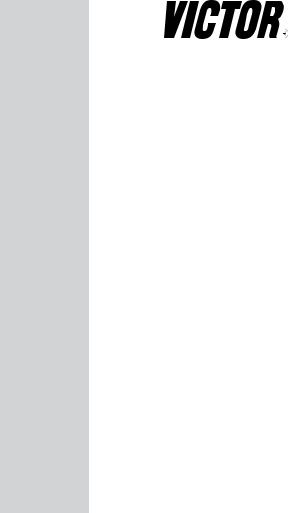
Torch Handles,
Cutting Attachments,
and Heating Nozzles
English
Français
Español
Safety and Operating
Instructions
Revision: C |
Issue Date: May 14, 2008 |
Form No.: 0056-0138 |

We appreciate your business!
Congratulations on your new Victor® product.We are proud to have you as our customer and will strive to provide you with the best service and reliability in the industry. This product is backed by our extensive warranty and worldwide service network. To locate your nearest distributor or service agency, please contact a representative at the address and phone number in your area listed on the inside back cover of this manual, or visit us on the web at www.victorequip.com.
This Operating Manual has been designed to instruct you on the correct use and operation of your Victor® product. Your satisfaction with this product and its safe operation is our ultimate concern. Therefore, please take the time to read the entire manual, especially the Safety Precautions.They will help you to avoid potential hazards that may exist when working with this product.
YOU ARE IN GOOD COMPANY!
The Brand of Choice for Contractors and Fabricators Worldwide.
Victor® is a Global Brand of gas equipment products for Thermadyne Industries, Inc. We manufacture and supply to major welding and cutting industry sectors worldwide, including: Manufacturing, Construction, Mining, Automotive, Aerospace, Engineering, Rural and DIY/Hobbyist, Scrap, Demolitions and Shipyards.
We distinguish ourselves from our competition through market-leading, dependable products that have stood the test of time. We pride ourselves on technical innovation, competitive prices, excellent delivery, superior customer service and technical support, together with excellence in sales and marketing expertise.
Above all, we are committed to develop technologically advanced products to achieve a safer working environment within the welding industry.

 warning
warning
Read and understand this entire manual and your employer’s safety practices before installing, operating, or servicing the equipment. While the information contained in this manual represents the Manufacturer’s judgment, the Manufacturer assumes no liability for its use.
Torch Handles, Cutting Attachments, and Heating Nozzles
Safety and Operating Instructions
Part Number 0056-0138
Published by:
Thermadyne® Industries, Inc. 2800 Airport Rd.
Denton, TX. 76208 (940) 566-2000
www.victorequip.com
U.S. Customer Care: (800) 426-1888
International Customer Care: (905) 827-9777
Copyright © 2008 Thermadyne Industries, Inc. All rights reserved.
Reproduction of this work,in whole or in part,without written permission of the publisher is prohibited.
The publisher does not assume and hereby disclaims any liability to any party for any loss or damage caused by any error or omission in this Manual, whether such error results from negligence, accident, or any other cause.
Publication Date: March 18, 2008
Record the following information for Warranty purposes:
Where Purchased:________________________________________________
Purchase Date:_ _________________________________________________
Equipment Serial #:_______________________________________________
Table of Contents
section 1: INTRODUCTION ........................................................ |
1-1 |
|
section 2: GENERAL SAFETY INFORMATION ........................... |
2-2 |
|
2.01 |
Fire Prevention................................................... |
2-2 |
2.02 |
Housekeeping.................................................... |
2-3 |
2.03 |
Ventilation ......................................................... |
2-3 |
2.04 |
Personal Protection ........................................... |
2-3 |
2.05 |
Compressed Gas Cylinders ............................... |
2-4 |
section 3: Torch handles...................................................... |
3-5 |
|
3.01 |
Welding Preparation........................................... |
3-5 |
3.02 |
Welding Setup.................................................... |
3-7 |
3.03 |
Welding Operation.............................................. |
3-8 |
3.04 |
Welding or Heating Completion.......................... |
3-9 |
section 4: cutting attachment.......................................... |
4-10 |
|
4.01 |
Cutting Preparation.......................................... |
4-10 |
4.02 |
Cutting Completion.......................................... |
5-13 |
section 5: check valves and flash arrestors.............. |
5-13 |
|
5.01 |
Reverse Flow Check Valves.............................. |
5-13 |
5.02 |
Flashback Arrestors......................................... |
5-14 |
5.03 |
Leak Testing..................................................... |
5-15 |
section 6: welding nozzles................................................ |
6-16 |
|
section 7: specifications.................................................... |
7-17 |
|
section 8: Statement of Warranty................................... |
8-22 |
|
ii
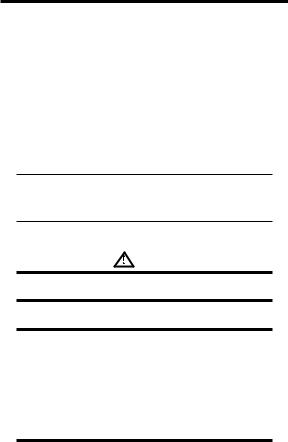
section 1: INTRODUCTION
This booklet is a guide to the safe and efficient operation of apparatus used in oxy-fuel applications. If the apparatus is not used in an oxyfuel application, the operator must still follow safety and operating procedures that apply. Usage presents several potential hazards. Read this booklet thoroughly and carefully before operating this equipment.
All operations should conform to applicable Federal, State, County, or City regulations for installation, operation, ventilation, fire prevention, and protection of personnel. ANSI Standard Z49.1, “Safety in Welding and Cutting" contains detailed safety instructions. It is available from the American Welding Society, P.O. Box 351040, Miami, FL 33135.
A system of notes, cautions, and warnings emphasize important safety and operating information in this booklet:
Note
Conveys installation, operation, or maintenance information which is important but not hazard-related.
 CAUTION
CAUTION
Caution indicates a potentially hazardous situation which, if not avoided, may result in injury.
Warning
Warning indicates a potentially hazardous situation which, if not avoided, could result in death or serious injury.
 warning
warning
DO NOT attempt to use this apparatus until you thoroughly read and understand all safety and operating instructions provided. For your safety, practice the safety and operating procedures described in this booklet every time you use the apparatus. Deviating from these procedures may result in fire, explosion, property damage and/or operator injury. If at any time the apparatus you are using does not perform in its usual manner, or you have any difficulty in the use of the apparatus, STOP using it immediately. DO NOT use the apparatus until the problem has been corrected!
1-1
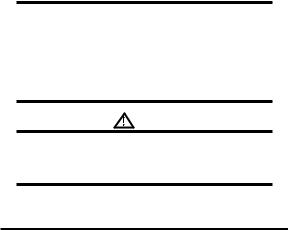
 WARNING
WARNING
Service or repair of apparatus should be performed only by a qualified repair technician capable of servicing gas apparatus in strict accordance to applicable Part and Service bulletins for Victor® manufactured products. Improper service repair, or modification of the product could result in damage to the product or injury to the operator. Improper service repair, use of non-genuine Victor® parts, or modification could result in damage to the product or injury to the operator.
Warning
This product contains chemicals, including lead, or otherwise produces chemicals known to the State of California to cause cancer, birth defects and other reproductive harm. Wash hands after handling. (California Health & Safety Code § 25249.5 et seq.)
section 2: GENERAL SAFETY INFORMATION
Read and understand all safety and operating instructions provided before using this apparatus. RETAIN THESE INSTRUCIONS IN A READILY AVAILABLE LOCATION FOR FUTURE REFERENCE.
2.01Fire Prevention
Welding and cutting operations use fire or combustion as a basic tool. The process is very useful when properly controlled. However, it can be extremely destructive if not performed correctly in the proper environment.
1.The work area must have a fireproof floor.
2.Work benches or tables used during welding or cutting operations must have fireproof tops.
3.Use heat resistant shields or other approved material to protect nearby walls or unprotected flooring from sparks and hot metal.
4.Keep an approved fire extinguisher of the proper size and type in the work area. Inspect it regularly to ensure that it is in proper working order. Know how to use the fire extinguisher.
2-2
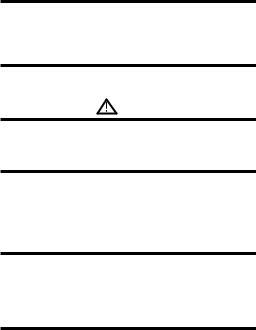
5.Move combustible materials away from the work site. If you can not move them, protect them with fireproof covers.
 WARNING
WARNING
NEVER perform welding, heating, or cutting operations on a container that has held toxic, combustible or flammable liquids, or vapors. NEVER perform welding, heating, or cutting operations in an area containing combustible vapors, flammable liquids, or explosive dust.
2.02 Housekeeping
WARNING
NEVER allow oxygen to contact grease, oil, or other flammable substances. Although oxygen by itself will not burn, these substances become highly explosive. They can ignite and burn violently in the presence of oxygen.
Keep ALL apparatus clean and free of grease, oil, and other flammable substances.
2.03Ventilation
 WARNING
WARNING
Adequately ventilate welding, heating, and cutting work areas to prevent accumulation of explosive or toxic concentrations of gases. Certain combinations of metals, coatings, and gases generate toxic fumes. Use respiratory protection equipment in these circumstances. When welding/brazing, read and understand the Material Safety Data Sheet for the welding/brazing alloy.
2.04Personal Protection
Gas flames produce infrared radiation which may have a harmful effect on the skin and especially on the eyes. Select goggles or a mask with tempered lenses, shaded 4 or darker, to protect your eyes from injury and provide good visibility of the work.
2-3
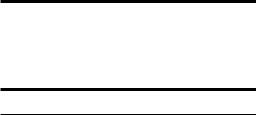
Always wear protective gloves and flame-resistant clothing to protect skin and clothing from sparks and slag. Keep collars, sleeves, and pockets buttoned. DO NOT roll up sleeves or cuff pants.
When working in a non-welding or cutting environment, always wear suitable eye protection or face shield. Practice the following safety and operation precautions EVERY TIME you use pressure regulation equipment. Deviation from the following safety and operation instructions can result in fire, explosion, damage to equipment, or injury to the operator.
2.05Compressed Gas Cylinders
The Department of Transportation (DOT) approves the design and manufacture of cylinders that contain gases used for welding or cutting operations.
1.Place the cylinder (Figure 1) where you will use it. Keep the cylinder in a vertical position. Secure it to a cart, wall, work bench, post, etc.
 WARNING
WARNING
Cylinders are highly pressurized. Handle with care. Serious accidents can result from improper handling or misuse of compressed gas cylinders DO NOT drop the cylinder, knock it over, or expose it to excessive heat, flames or sparks. DO NOT strike it against other cylinders. Contact your gas supplier or refer to CGA P-1 “Safe Handling of Compressed Gases in Containers” publication.
Note
CGA P-1 publication is available by writing the Compressed Gas Association, 4221 Walney Road, 5th Floor, Chantilly.VA 201512923
2.Place the valve protection cap on the cylinder whenever moving it, placing it in storage, or not using it. Never drag or roll cylinders in any way. Use a suitable hand truck to move cylinders.
3.Store empty cylinders away from full cylinders. Mark them “EMPTY” and close the cylinder valve.
4.NEVER use compressed gas cylinders without a pressure reducing regulator attached to the cylinder valve.
5.Inspect the cylinder valve for oil, grease, and damaged parts.
2-4
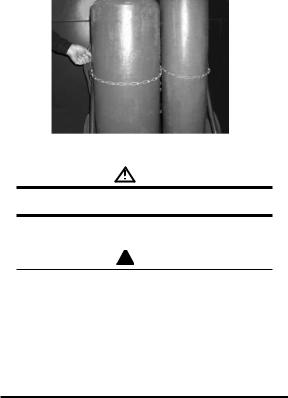
Figure 1: Gas Cylinders
WARNING
DO NOT use the cylinder if you find oil, grease or damaged parts. Inform your gas supplier of this condition immediately.
6.Momentarily open and close (called “cracking”) the cylinder valve to dislodge any dust or dirt that may be present in the valve.
 CAUTION
CAUTION
Open the cylinder valve slightly. If you open the valve too much, the cylinder could tip over. When cracking the cylinder valve, DO NOT stand directly in front of the cylinder valve. Always perform cracking in a well-ventilated area. If an acetylene cylinder sprays a mist when cracked, let it stand for 15 minutes. Then, try to crack the cylinder valve again. If this problem persists, contact
your gas supplier.
section 3: Torch handles
3.01Welding Preparation
1.Be certain cylinder valves and regulator connections are completely free of dirt, dust, oil, or grease.If oil, grease, or damage is detected on the cylinder valves, DO NOT use the cylinder. Notify the cylinder supplier immediately.If oil, grease, or damage is detected on the
3-5

regulator, DO NOT use the regulator. Have the regulator cleaned or repaired by a qualified repair technician.
2.Connect the oxygen hose to the oxygen regulator. Tighten the connection firmly with a wrench.
3.Always open the cylinder valves slowly and carefully and check for leaks on the regulator and cylinder valve connections.
4.Momentarily open and close the cylinder valve (commonly referred to as “cracking”). This dislodges any loose contaminants that may be present.
 Caution
Caution
Open the cylinder valve only slightly. If the valve is opened too much the cylinder could tip over. When “cracking” the cylinder valve, DO NOT stand, nor have anyone stand directly in front of the valve opening. Stand behind or to one side. Crack the cylinder valve in a well-ventilated area only. If an acetylene cylinder sprays a mist when it is cracked, let it set for 30 minutes. Then try to crack the cylinder valve again. If the problem persists, contact your gas supplier.
 warning
warning
Never stand, nor have anyone stand in front or behind a regulator when opening the cylinder valve. Always stand so that the cylinder is between you and the regulator.
5.Adjust the oxygen regulator to allow 3 - 5 PSIG to pass through the hose. Allow oxygen to flow for 5 - 10 seconds to clear the hose of dust, dirt, or preservatives. Shut off the oxygen flow.
6.Attach and clear the fuel hose in the same manner.
 warning
warning
Clear hoses in a well-ventilated area. The escaping gases create conditions for fires and explosions. Keep hoses clear of any falling metal, slag, or sparks. Never allow hoses to become coated with oil, grease, or dirt. This could conceal damaged areas on the hoses. Examine the hoses before attaching the torch handle or regulators. If any cuts,burns, worn areas, cracks, or damaged fittings are found, repair or replace the hose.
3-6

7.Inspect the torch handle head, valves, and hose connections for oil, grease, or damaged parts. Inspect the hose connections in the same manner. DO NOT use them if oil, grease, or damage is detected.
8.Inspect the torch handle. The tapered seating surfaces in the head must be in good condition. If dents or burned seats are present, the seat must be resurfaced. If the torch handle is used with poor seating surfaces, backfire may occur.
9.Using a 3/4" open-end wrench, check the flashback arrestors to make sure they are tight. If loose, a flashback may have occurred.
10.Attach the hose to the torch handle and tighten securely with a wrench.
3.02Welding Setup
1.Check the thickness of the metals to be welded. Prepare the metal as described. Refer to the welding tip selection chart to determine the tip size that is required and the regulator pressures for the job.
2.Open the oxygen valve on the torch handle and adjust the oxygen regulator to the required delivery range.Then close the torch handle oxygen control valve to purge the oxygen hose.
3.Open the fuel valve on the torch handle and adjust the fuel regulator to the required delivery range. Then close the torch handle fuel control valve to purge the fuel hose.
 warning
warning
If the torch handle and hoses are already connected to the regulators, the system MUST still be purged after every shutdown in a well-ventilated area. Open the oxygen valve 1/2 turn. Allow the gas to flow ten seconds for tips up to a size three and five seconds for sizes 4 and larger for each 25 feet of hose in the system. Close the oxygen valve and purge the fuel system in the same manner.
4.Wear the recommended protective goggles (shaded 5 or darker) with tempered lenses to shield your eyes from the light. Wear protective clothing as required.
3-7

note
The following instructions cover torch adjustment procedures for acetylene only. Contact your gas supplier for instructions on the use of other fuel gases.
5.Hold the torch in one hand and the spark lighter in the other. Be sure the spark lighter is away from the tip and not obstucting the gas flow.
6.Open the torch fuel valve approximately 1/8 turn and ignite the gas.
 caution
caution
Point the flame away from people, equipment, and all flammable materials.
7.Continue opening the fuel valve until the flame stops smoking.
8.Open the torch oxyen valve until a bright neutral flame is established.
 warning
warning
If you experience a sustained backfire (a shrill hissing sound when the flame is burning inside the nozzle), immediately turn off the oxygen valve on the torch handle. Then, turn off the fuel valve. Allow the torch and nozzle time to cool before attempting to reuse. If backfire recurs, take the apparatus to a qualified repair technician for repair before using the equipment again.
3.03Welding Operation
1.Clean the metal joints to be welded from all scale, rust, dirt, paint, grease, and all foreign materials.
2.Some thicker metals may require additional preparation. Base metals 1/8" or less do not require beveling.
3.Place the metal to be welded on a non-flammable work table and determine where the tacking will be required.
4.Begin by tacking the ends of the two pieces of metal together before welding. Longer pieces may need to be tacked every few inches along the joint.
3-8
5.Longer pieces may also require additional penetration gap,VICTOR® recommends 1/16" - 1/8".
6.Hold the torch nozzle at an angle of approximately 45° to the joint.
7.Move the torch nozzle over the starting edges of the joint. Rotate the flame near the metal in a circular or semicircular motion until the base metals run into a small puddle.
8.Dip the end of the filler rod in and out of the molten puddle, this melts the rod and adds to the puddle.
9.Continue the dipping motion of the filler rod into the puddle. Then move the torch back and forth across the joint.
10.Advance the torch nozzle at a rate of approximately 1/16" of the filler rod as it is added to the puddle until the end of the joint is achieved.
3.04Welding or Heating Completion
1.Shut off the torch oxygen valve. Then, shut off the torch fuel valve. Be careful not to shut off the fuel valve first; this may create a “pop” type sound. When the “pop” happens it throws carbon soot back into the torch and may in time partially clog gas passages and the flashback arrestors.
2.Close both cylinder valves.
3.Open the torch handle oxygen valve. Release the pressure from the system and then close the torch oxygen valve.
4.Turn the adjusting screw on the oxygen regulator counterclockwise to release all spring pressure.
5.Open the torch handle fuel valve and release the pressure from the system. Close the torch fuel valve.
6.Turn the adjusting screw on the fuel gas regulator counterclockwise to release all spring pressure.
7.Check the inlet gauges after a few minutes to ensure the cylinder valves are turned off completely and there is no pressure remaining in the system.
3-9
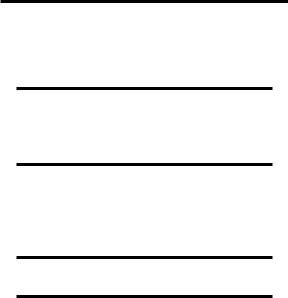
section 4: cutting attachment
4.01Cutting Preparation
1.Inspect the cone end, coupling nut, and torch head for oil, grease, or damaged parts. Also inspect the cone end for missing or damaged O-rings.
 warning
warning
If you find oil, grease, or damage, DO NOT use the apparatus until it has been cleaned or repaired by a qualified repair technician. The two O-rings on the cone end must be in place and in good condition. The absence of either of these O-rings allows pre-mixing of oxygen and fuel gases. This can lead to a sustained backfire within the torch handle and cutting attachment.
2.Inspect the cutting tip and cutting attachment head. All tapered seating surfaces must be in good condition. Discard damaged cutting tips. If you find dents, burns, or burned seats, resurface the torch head. If you use the cutting attachment with poor seating surfaces, a backfire or sustained backfire may occur.
 warning
warning
If the tapered seats on the cutting tip are damaged, DO NOT use the tip. Poor seating surfaces may cause a backfire or sustained backfire.
3.Inspect the preheat and cutting oxygen holes on the tip. Slag can stick on or in these holes. If the holes are clogged or obstructed, clean them out with the proper size tip cleaner.
4.Insert the tip into the cutting attachment head. Tighten the tip nut securely with a wrench (15 - 20 lbs. torque).
5.Connect the cutting attachment to the torch handle and tighten the coupling nut until it is hand tight. DO NOT use a wrench, as damage to the O-rings may occur creating a faulty seal.
6.Refer to the Tip Flow Data Charts for correct cutting tip, regulator pressures, and travel speed.
4-10
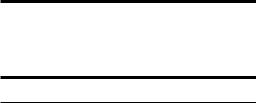
7.Follow cylinder and regulator safety and operating procedures.
8.Open the oxygen valve on the torch handle completely.
9.Open the preheat oxygen control valve on the cutting attachment and adjust the oxygen regulator to the desired delivery pressure. This will purge the oxygen hose.
10.Close the preheat oxygen control valve.
11.Open the fuel valve on the torch handle and adjust the fuel regulator delivery range. This will purge the fuel hose.
12.Close the fuel control valve on the torch handle.
13.Momentarily depress the cutting oxygen lever to purge the cutting oxygen passage in the cutting attachment.
 warning
warning
If the torch handle and hoses are already connected to the regulators, the system MUST still be purged after each shutdown. Open the oxygen valve 1/2 turn. Allow the gas to flow ten seconds for tips up to size 3, and five seconds for sizes 4 and larger for each 25 feet of hose in the system. Close the oxygen valve and purge the fuel system in the same manner.
Note
Always wear protective clothing and proper goggles to shield your eyes from infrared light.
14.Open the fuel valve on the torch handle approximately 1/8 turn and ignite the gas with a spark lighter. Be sure the spark lighter is away from the tip and not obstructing the gas flow.
15.Continue to increase the fuel supply at the torch handle until the flame stops smoking.
16.Slowly open the preheat oxygen control valve on the cutting attachment until the preheat flame is established with a smooth inner cone.
17.Depress the cutting oxygen lever. If necessary, readjust the preheat flames slightly to a neutral flame by increasing the preheat oxygen at the cutting attachment until the preheat flames are again neutral. If the preheat flames are not the same size and the cutting oxygen is not straight, turn off the torch and let it cool, then clean the tip.
4-11
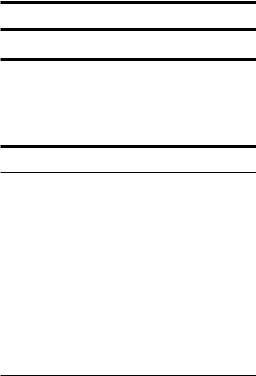
 WARNING
WARNING
Never open and light the fuel gas torch and oxygen at the same time.
 WARNING
WARNING
If you experience a sustained backfire (flame disappears and/or a shrill hissing sound is heard caused by the flame burning inside the cutting attachment), immediately turn off the preheat oxygen control valve on the cutting attachment. Then turn off the torch handle fuel valve. Allow the cutting attachment to cool before attempting to relight. If backfire recurs, have the apparatus checked by a qualified repair technician before using the apparatus again.
NOTE
Inspect the areas where slag and sparks will fall. Serious fires and explosions are caused by careless torch operations. Take all possible precautions. Have fire extinguishers available. Remove or protect flammable substances, including oxygen and fuel hoses, before starting to work.
18.Hold the cutting attachment and torch handle comfortably in both hands. Stabilize the torch and position the cutting tip preheat flames approximately 1/4" from the base metal.
19.Direct the preheat flame to the spot where the cut is to begin. Before the cutting action can start, preheat the starting point of the metal to a bright cherry red kindling temperature. When the red spot appears, depress the cutting oxygen lever slowly and fully.
20.When the cut starts, move the torch in the direction you wish to cut.
NOTE
Moving too slowly allows the cut to fuse together. Moving too fast will not preheat the metal and the cut will be lost.
21.Continue to fully depress the cutting oxygen lever until the cutting oxygen stream is past the base metal for a good drop cut.
4-12

4.02Cutting Completion
1.Shut off the oxygen preheat valve. Then, close the torch fuel valve. Be careful not to shut off the fuel valve first, this may create a “pop" type sound. When the “pop” happens it throws carbon soot back into the torch and may in time partially clog gas passages and the flashback arrestors.
2.Close both cylinder control valves on the gas source supply.
3.Open the oxygen valve and depress the cutting oxygen lever. Release the pressure from the system and then close the oxygen preheat and the torch handle oxygen control valve.
4.Turn the adjusting screw on the oxygen regulator counterclockwise to release all spring pressure.
5.Open the torch fuel control valve and release the pressure from the system. Close the fuel valve.
6.Turn the adjusting screw on the fuel gas regulator counterclockwise to release all spring pressure.
7.Check the inlet gauges after a few minutes to ensure the cylinder valves are turned off completely and no pressure remains in the system.
8.Remove slag left on the cut edge with a chipping hammer or brush. Never remove slag from the cut edge with the torch head or cutting tip.
section 5:
check valves and flash arrestors
5.01Reverse Flow Check Valves
The body “Y” has two control valves attached to it. The valve bodies are marked to distinguish between the two valves. The body of one valve has left-hand threads to accept the fuel gas hose. The other valve body has right-hand threads to accept the oxygen hose. The control valves never require lubricating. Occasionally, the packing nuts may require a slight adjustment.
Most VICTOR® torch handles are equipped with patented built-in reverse flow check valves to reduce the possibility of mixing gases in the hoses and regulators.
5-13

 CAUTION
CAUTION
Check valves are mechanical devices that can leak when dirty or if abused. Check valves should be tested at least every six months, more often if hoses are frequently disconnected. Careless usage, dirt or abuse can shorten the service life of check valves, thus requiring more frequent testing. Follow the manufacturer’s instructions for testing the check valves.
NOTE
Reverse flow check valves are not the same as flashback arrestors. Check valves are designed to help prevent reverse flow of gas upstream of the torch. Flashback arrestors are designed to prevent mixed gases from igniting upstream of the flashback arrestors.
5.02Flashback Arrestors
NOTE
VICTOR® torch handle model numbers that contain the letters “FC” are equipped with built-in flashback arrestors and check valves (i.e. 315FC). Model numbers with a “C” only contain built-in check valves (i.e. 315C). Earlier versions without an “F” or “C” in the model number contained neither (i.e. 315). For all “C” model torch handles and earlier versions, it is recommended that add-on flashback arrestors be installed. Most add-on flashback arrestors also contain built-in check valves.
Most VICTOR® torch handles are equipped with built-in flashback arrestors. Flashback arrestors are designed to prevent mixed gases from igniting upstream of the flashback arrestors.
 CAUTION
CAUTION
It is not recommended to use accessory flashback arrestors on VICTOR® FC torch handles since these devices are already built-in. Excessive flow restrictions may occur.
The flashback arrestors contained in this torch are designed to prevent a flashback flame from entering the hose and gas supply system. A very fine “filter-like” sintered stainless steel flame barrier stops flashback flame.
For maximum service life of the flashback arrestor, completely purge all lines and hoses before connecting to the torch. This removes loose
5-14
material contained in the hose or regulator that could restrict flow through the flashback arrestor.
Flow restriction and torch overheating results if dirt or “oily” LPG residuals are allowed to flow into the flashback arrestor and cause clogging. Make sure not to draw liquid.
Always store and use cylinders in the upright position.
5.03Leak Testing
The system MUST be tested for leaks before lighting the torch. To leak test the system perform the following steps.
1.Be sure that both the oxygen and fuel control valves on the torch handle are closed.
2.With the oxygen cylinder valve open, adjust the oxygen regulator to deliver 20 PSIG.
3.With the fuel cylinder valve open, adjust the fuel regulator to deliver 10 PSIG.
4.Close both the oxygen and fuel cylinder valves.
5.Turn the adjusting screws counterclockwise 1/2 turn.
6.Observe the gauges on both regulators for five minutes. If the gauge readings do not change, then the system is leak tight. If there is a leak, use an approved leak detection solution to locate it. If the inlet gauge reading decreases, there is a leak at the cylinder valve or inlet connection. Tighten the inlet connection after the pressure has been released from the regulator. If the inlet connection still leaks try another cylinder. If the same leak develops, take the regulator to a qualified repair technician. Never tighten a cylinder valve. If the cylinder valve is leaking, remove the regulator from the cylinder, place the cylinder outdoors and notify your gas supplier immediately. If the delivery gauge reading decreases, there is a leak at the regulator outlet connection, within the hose, at the torch inlet connection or at the control valves on the torch handle. Tighten the regulator outlet connection and the torch handle inlet connection after the pressure has been released from the system. If the connections are still leaking, take the regulator or torch handle to a qualified repair technician. If the hoses are leaking, replace them. If the high pressure gauge drops and at the same time the
5-15

delivery gauge rises, there is a leak in the regulator seat. Take the regulator to a qualified repair technician for repair.
7.After leak testing the system, open the cylinder valves and proceed.
 WARNING
WARNING
If a leak has been detected anywhere in the system, discontinue use and have the system repaired. DO NOT use leaking equipment. Do not attempt to repair a leaking system while the system is under pressure. Perform all operations in a well-ventilated area to help
prevent the concentration of flammable or toxic fumes.
section 6: welding nozzles
1.Inspect the cone end, coupling nut, O-rings, and welding nozzle for damage, oil or grease. Do not use if damage or contaminants are present.
 WARNING
WARNING
There must always be two O-rings on the cone end.The absence or damage of either of these O-rings allows premixing of the oxygen and fuel gases. This can lead to a sustained backfire within the torch handle.
2.Connect the welding nozzle to the torch handle.Tighten the coupling nut HAND TIGHT only. Using a wrench could damage the O-rings and create a faulty seal.
Multi-Flame Heating Nozzles (Rosebuds)
Multi-flame heating nozzles are set up exactly as the welding nozzle. Follow the safety and operation procedures described above for the welding nozzle.
 CAUTION
CAUTION
Never starve or choke a welding nozzle or multi-flame heating nozzle. This causes overheating of the nozzle and a backfire or sustained backfire may result. Should a sustained backfire occur (flame pops and disappears and/or a hissing sound is heard, the flame is burning inside the nozzle), immediately turn off the oxygen
6-16

valve on the torch handle. Then, turn off the fuel valve. Allow the nozzle to cool before using it. If a backfire reoccurs, have the
apparatus checked by a qualified technician before using again.
section 7: specifications
WELDING NOZZLE FLOW DATA
|
|
|
Oxygen |
Acetylene |
Acetylene |
|||
|
|
|
Pressure |
Pressure |
Consumption |
|||
|
|
|
(PSIG) |
(PSIG) |
(SCFH) |
|||
Metal |
Tip |
Drill Size |
Min |
Max |
Min |
Max |
Min |
Max |
Thickness |
Size |
|||||||
Up to 1/32" |
000 |
75 (.022) |
3 |
5 |
3 |
5 |
1 |
2 |
1/16" - 3/64" |
00 |
70 (.028) |
3 |
5 |
3 |
5 |
1 1/2 |
3 |
1/32" - 5/64" |
0 |
65 (.035) |
3 |
5 |
3 |
5 |
2 |
4 |
3/64" - 3/32" |
1 |
60 (.040) |
3 |
5 |
3 |
5 |
3 |
6 |
1/16" - 1/8" |
2 |
56 (.046) |
3 |
5 |
3 |
5 |
5 |
10 |
1/8" - 3/16" |
3 |
53 (.060) |
4 |
7 |
3 |
6 |
8 |
18 |
3/16" - 1/4" |
4 |
49 (.073) |
5 |
10 |
4 |
7 |
10 |
25 |
1/4" - 1/2" |
5 |
43 (.089) |
6 |
12 |
5 |
8 |
15 |
35 |
1/2" - 3/4" |
6 |
36 (.106) |
7 |
14 |
6 |
9 |
25 |
45 |
3/4" - 1 1/4" |
7 |
30 (.128) |
8 |
16 |
8 |
10 |
30 |
60 |
1 1/4" - 2" |
8 |
29 (.136) |
10 |
19 |
9 |
12 |
35 |
75 |
2 1/2" - 3" |
10 |
27 (.144) |
12 |
24 |
12 |
15 |
50 |
100 |
3 1/2" - 4" |
12* |
25 (.149) |
18 |
28 |
12 |
15 |
80 |
160 |
7-17
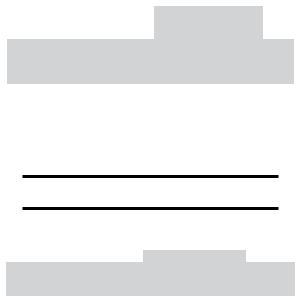
MFA HEATING NOZZLES
|
|
|
Acetylene |
Oxygen |
|
|||
|
|
|
Cubic Feet |
Cubic Feet per |
|
|||
|
|
|
per Hour |
Hour |
|
|||
|
Acetylene |
Oxygen |
|
|
|
|
BTU |
|
Tip |
Pressure |
|
|
|
|
|||
Pressure Range |
Min |
Max |
Min |
Max |
per |
|||
Size |
Range |
|||||||
(PSIG) |
|
|
|
|
Hour |
|||
|
(PSIG) |
|
|
|
|
|||
|
|
|
|
|
|
|
||
4 |
6 -10 |
8 - 12 |
6 |
20 |
7 |
22 |
|
|
6 |
8 -12 |
10 - 15 |
14 |
40 |
15 |
44 |
See |
|
8 |
10 - 15 |
20 - 30 |
30 |
80 |
33 |
88 |
Note, |
|
10 |
12 - 15 |
30 - 40 |
40 |
100 |
44 |
110 |
page |
|
12* |
12 - 15 |
50 - 60 |
60 |
150 |
66 |
165 |
23 |
|
15* |
12 - 15 |
50 - 60 |
90 |
220 |
99 |
244 |
|
|
 WARNING
WARNING
At no time should the withdrawal rate of an individual acetylene cylinder exceed 1/7 of the cylinder contents per hour. If additional flow capacity is required, use an acetylene manifold system of sufficient size to supply the necessary volume.
Type 55 Nozzles
Not For Use With Acetylene
|
|
|
Consumption (SCFH) |
|
||
Tip |
Oxygen |
Fuel Gas |
|
|
|
|
Pressure |
Pressure |
Oxygen |
Fuel Gas |
BTU Hour |
||
Size |
||||||
(PSIG) |
(PSIG) |
|
|
|
||
|
|
|
|
|||
10* |
70 - 100 |
15 - 25 |
350 - 460 |
150 - 200 |
See Note, |
|
15* |
90 - 120 |
20 - 35 |
600 - 800 |
250 - 350 |
||
page 23 |
||||||
20* |
100 - 150 |
30 - 50 |
900 - 1150 |
400 - 500 |
||
|
||||||
*Use model HD310C torch and 3/8" hose.
7-18

MFN HEATING NOZZLES
|
|
|
Propane Cubic |
Oxygen Cubic |
|
|||
|
|
|
Feet per Hour |
Feet per Hour |
|
|||
|
Propane |
Oxygen |
|
|
|
|
|
|
Tip |
Pressure |
Pressure |
Min |
Max |
Min |
Max |
BTU per |
|
Size |
Range |
Range |
Hour |
|||||
|
|
|
|
|||||
|
(PSIG) |
(PSIG) |
|
|
|
|
|
|
8 |
10-15 |
10-20 |
10 |
35 |
40 |
140 |
See |
|
10 |
12-20 |
10-30 |
20 |
80 |
80 |
320 |
||
Note, |
||||||||
12* |
15 - 25 |
30 - 125 |
30 |
160 |
120 |
640 |
||
page |
||||||||
15* |
15 - 25 |
30 - 125 |
50 |
200 |
200 |
800 |
||
23 |
||||||||
20* |
20 - 30 |
40 - 135 |
75 |
250 |
300 |
1000 |
||
|
||||||||
*Use model HD310C torch and 3/8" hose.
TYPES 1-101, 3-101 (OXY-ACETYLENE)
|
|
Cutting Oxygen |
|
|
|
Acetylene |
|
|
|
|||
Metal |
Tip |
Pres- |
Flow*** |
Pre-heat |
Pres- |
|
Flow |
Speed |
Kerf |
|||
sure*** |
Oxygen* |
sure |
|
|||||||||
Thickness |
Size |
(SCFH) |
|
(SCFH) |
(IPM) |
Width |
||||||
(PSIG) |
(PSIG) |
(PSIG) |
|
|||||||||
|
|
|
|
|
|
|
|
|
||||
1/8" |
000 |
20 - 25 |
20 |
- 25 |
3 - 5 |
3 |
- 5 |
|
6 - 11 |
20 |
- 30 |
.04 |
1/4" |
00 |
20 - 25 |
30 |
- 35 |
3 - 5 |
3 |
- 5 |
|
6 - 11 |
20 |
- 28 |
.05 |
3/8" |
0 |
25 - 30 |
55 |
- 60 |
3 - 5 |
3 |
- 5 |
|
6 - 11 |
18 |
- 26 |
.06 |
1/2" |
0 |
30 - 35 |
60 |
- 65 |
3 - 6 |
3 |
- 5 |
|
9 - 16 |
16 |
- 22 |
.06 |
3/4" |
1 |
30 - 35 |
80 |
- 85 |
4 - 7 |
3 |
- 5 |
|
8 - 13 |
15 |
- 20 |
.07 |
1" |
2 |
35 - 40 |
140 |
- 160 |
4 - 8 |
3 |
- 6 |
|
10 - 18 |
13 |
- 18 |
.09 |
2" |
3 |
40 - 45 |
210 |
- 240 |
5 - 10 |
4 |
- 8 |
|
14 -24 |
10 |
- 12 |
.11 |
3" |
4 |
40 - 50 |
280 |
- 320 |
5 - 10 |
5 - 11 |
|
18 - 28 |
10 |
- 12 |
.12 |
|
4" |
5 |
45 - 55 |
390 |
- 450 |
6 - 12 |
6 - 13 |
|
22 - 30 |
6 |
- 9 |
.15 |
|
6" |
6** |
45 - 55 |
500 |
- 600 |
6 - 15 |
8 - 14 |
25 - 35 |
4 |
- 7 |
.15 |
||
10" |
7** |
45 - 55 |
700 |
- 850 |
6 - 20 |
10 |
- 15 |
25 - 35 |
3 |
- 5 |
.34 |
|
12" |
8** |
45 - 55 |
900 - 1050 |
7 - 25 |
10 |
- 15 |
|
25 - 35 |
3 |
- 4 |
.41 |
|
*Applicable for three-hose machine cutting torches only. With a two-hose cuting torch, preheat pressure is set by the cuttting oxygen.
**For best results use HC1200C series torches and 3/8" hose using a size 6 tip or larger.
***All pressures are measured at the regulator using 25' x 1/4" hose through tip size 5, and 25' x 3/8" hose for tip size 6 and larger.
7-19
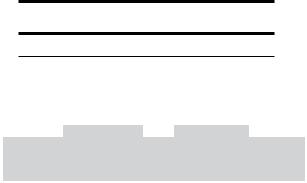
Note
Approximate gross BTU contents per cubic foot: |
|
||
• |
Acetylene - 1470 |
• |
Mapp - 2406 |
• |
Butane - 3374 |
• |
Methane - 1000 |
• |
Natural Gas - 1000 |
• |
Propylene - 2371 |
•Propane - 2458
 WARNING
WARNING
At no time should the withdrawal rate of an individual acetylene cylinder exceed 1/7 of the cylinder contents per hour. If additional flow capacity is required, use an acetylene manifold system of sufficient size to supply the necessary volume.
 CAUTION
CAUTION
Always make sure your equipment is rated for the size tip you have selected. A tip with too much capacity for the equipment can starve or choke the tip. This causes overheating of the head and a backfire may result. Use only genuine VICTOR®, Cutskill®, or Firepower® cutting tips, welding nozzles and multi-flame nozzles to ensure leak-free connections and balanced equipment.
TYPES 303M, GPM, GPN, GPP
|
|
Cutting Oxygen |
|
Pre-Heat Fuel Gas |
|
|
|
||||||
|
|
|
|
|
Pre- |
|
|
|
|
|
|
|
|
Metal |
Tip |
Pressure |
Flow |
Heat |
Pressure |
Flow |
Speed |
Kerf |
|||||
Thickness |
Size |
*** PSIG |
SCFH |
Oxygen |
SCFH |
IPM |
Width |
||||||
|
|
|
|
|
PSIG |
PSIG |
|
|
|
|
|
||
|
|
|
|
|
|
|
|
|
|
|
|
||
1/8" |
000 |
20 - 25 |
12 |
- 14 |
|
3 |
- 5 |
5 |
- 6 |
20 |
- 30 |
.04 |
|
1/4" |
00 |
20 - 25 |
22 |
- 26 |
|
3 |
- 5 |
5 |
- 7 |
20 |
- 28 |
.05 |
|
3/8" |
0 |
25 - 30 |
45 |
- 55 |
|
3 |
- 5 |
8 - 10 |
18 |
- 26 |
.06 |
||
1/2" |
0 |
30 - 35 |
50 |
- 55 |
|
3 |
- 5 |
8 - 10 |
16 |
- 22 |
.06 |
||
3/4" |
1 |
30 - 35 |
70 |
- 80 |
|
4 |
- 6 |
10 |
- 12 |
15 |
- 20 |
.08 |
|
1" |
2 |
35 - 40 |
115 |
- 125 |
See |
4 |
- 8 |
12 |
- 15 |
13 |
- 20 |
.09 |
|
1 1/2" |
2 |
40 - 45 |
125 |
- 135 |
4 |
- 8 |
12 |
- 15 |
13 |
- 18 |
.09 |
||
Note, |
|||||||||||||
2" |
3 |
40 - 45 |
150 |
- 175 |
5 |
- 9 |
14 |
- 18 |
11 |
- 13 |
.10 |
||
page |
|||||||||||||
2 1/2" |
3 |
45 - 50 |
175 |
- 200 |
5 |
- 9 |
14 |
- 18 |
10 |
- 12 |
.10 |
||
23 |
|||||||||||||
3" |
4 |
40 - 50 |
210 |
- 250 |
6 - 10 |
16 |
- 20 |
8 - 10 |
.12 |
||||
|
|||||||||||||
4" |
5 |
45 - 55 |
300 |
- 360 |
|
8 - 12 |
20 |
- 30 |
6 |
- 9 |
.14 |
||
5" |
5 |
50 - 55 |
330 |
- 360 |
|
8 - 12 |
20 |
- 30 |
4 |
- 7 |
.14 |
||
6" |
6 |
45 - 55 |
400 |
- 500 |
|
10 |
- 15 |
25 |
- 35 |
3 |
- 5 |
.17 |
|
8" |
6 |
55 - 65 |
450 |
- 500 |
|
10 |
- 15 |
25 |
- 35 |
3 |
- 4 |
.18 |
|
12" |
8** |
60 - 70 |
750 |
- 850 |
|
10 |
- 14 |
25 - 120 |
3 |
- 4 |
.41 |
||
7-20
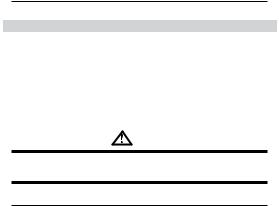
NOTE:
The above data applies to all torches with the following exceptions:
Torch Series |
Pre-heat Oxygen |
Pre-heat Fuel |
MT 200 Series |
N/A |
8 oz. - Up |
MT 300 Series |
10-50 PSIG |
8 oz. - Up |
*Applicable for 3-hose machine cutting torches only. With a two hose cutting torch, preheat pressure is set by the cuttting oxygen.
**For best results use HC1200C and HC1100C series torches and 3/8" hose when using a size 6 tip or larger.
***All pressures are measured at the regulator using 25' x 3/8" hose for tip size 6 and larger.
WARNING
High gas withdrawal rates require use of a manifold system of sufficient size to supply the necessary volume. High gas withdrawal rates may also require use of a vaporizer.
 CAUTION
CAUTION
Always make sure your equipment is rated for the size tip you have selected. A tip with too much capacity for the equipment can starve or choke the tip. This causes overheating of the head and a backfire may result. Use only genuine VICTOR®, Cutskill® or Firepower® cutting tips, welding nozzles and multi-flame nozzles to ensure leak-free connections and balanced equipment.
7-21

section 8: Statement of Warranty
LIMITED WARRANTY: THERMADYNE® warrants that its products will be free of defects in workmanship or material. Should any failure to conform to this warranty appear within the time period applicable to the THERMADYNE products as stated below, THERMADYNE shall, upon notification thereof and substantiation that the product has been stored, installed, operated, and maintained in accordance with THERMADYNE’s specifications, instructions, recommendations and recognized standard industry practice, and not subject to misuse, repair, neglect, alteration, or accident, correct such defects by suitable repair or replacement, at THERMADYNE’s sole option, of any components or parts of the product determined by THERMADYNE to be defective.
THIS WARRANTY IS EXCLUSIVE AND IS IN LIEU OF ALL OTHER
WARRANTIES, EXPRESS OR IMPLIED, INCLUDING ANY WARRANTY OF MERCHANTABILITY OR FITNESS FOR A PARTICULAR PURPOSE.
LIMITATION OF LIABILITY: THERMADYNE shall not under any circumstances be liable for special or consequential damages, such as, but not limited to, damage or loss of purchased or replacement goods, or claims of customers of distributor (hereinafter the “Purchaser") for service interruption. The remedies of the Purchaser set forth herein are exclusive and the liability of THERMADYNE with respect to any contract, or anything done in connection therewith such as the performance or breach thereof, or from the manufacture, sale, delivery, resale, or use of any goods covered by or furnished by THERMADYNE whether arising out of contract, negligence, strict tort, or under any warranty, or otherwise, shall not, except as expressly provided herein, exceed the price of the goods upon which such liability is based.
THIS WARRANTY BECOMES INVALID IF REPLACEMENT PARTS OR ACCESSORIES ARE USED WHICH MAY IMPAIR THE SAFETY OR PERFORMANCE OF ANY THERMADYNE PRODUCT.
THIS WARRANTY IS INVALID IF THE PRODUCT IS SOLD BY NONAUTHORIZED PERSONS.
This warranty is effective for the time stated in the Warranty Schedule beginning on the date that the authorized distributor delivers the products to the Purchaser.
8-22
Warranty repairs or replacement claims under this limited warranty must be submitted by an authorized THERMADYNE repair facility within thirty (30) days of the repair. No transportation costs of any kind will be paid under this warranty. Transportation charges to send products to an authorized warranty repair facility shall be the responsibility of the Purchaser. All returned goods shall be at the Purchaser’s risk and expense. This warranty supersedes all previous THERMADYNE warranties.
8-23
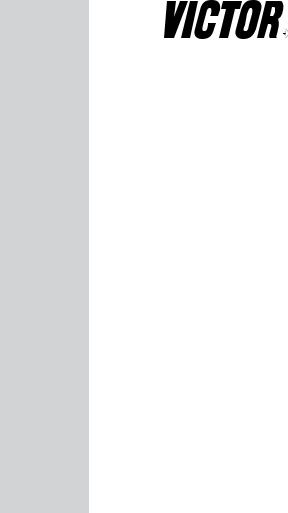
Les Chalumeaux, Les
Attachements Coupeurs
et Buses de Chauffage
English
Français
Español
Guide d’installation et d’utilisation
Révision: C |
Date d’émission: 14 Mai 2008 |
Nº de document: 0056-0138 |

VOTRE ACTIVITÉ NOUS INTÉRESSE!
Félicitations pour votre nouveau produit Victor®. Nous sommes fiers de vous avoir comme client et nous tâcherons de vous fournir les meilleurs services et fiabilité dans l’industrie. Ce produit est soutenu par une vaste garantie et un réseau mondial de service. Pour localiser votre distributeur ou agence de service le plus proche, veuillez communiquer avec un représentant à l’adresse ou au numéro de téléphone correspondant à votre région, indiqué au verso de la couverture du manuel, ou visitez notre site web www.victorequip.com.
Ce Manuel d’utilisation a été conçu pour vous permettre d’utiliser et de faire fonctionner correctement votre produit Victor®. Votre satisfaction et le fonctionnement en toute sécurité de votre produit sont nos principaux soucis. Par conséquent, veuillez prendre le temps de lire tout le manuel, spécialement en ce qui concerne les Précautions de Sécurité. Ceci vous aidera à éviter déventuels accidents qui pourraient survenir en travaillant avec ce produit.
VOUS ÊTES EN BONNE COMPAGNIE!
La Marque de Choix pour les Entrepreneurs et les Fabricants dans le Monde.
Victor® est une marque mondialement reconnue pour ses produits d’équipement de gaz pour Thermadyne Industries, Inc. Nous fabriquons et fournissons dans le monde entier aux secteurs industriels majeurs de soudage et coupage, incluant fabrication, construction, exploitation minière, automobile, aérospatiale, ingénierie, rural et bricolage/hobby, reyclage, démolition et construction navale.
Nous nous distinguons de notre concurrence grâce à nos produits en tête du marché, fiables, ayant résisté à l’épreuve du temps. Nous sommes fiers de notre innovation technique, nos prix compétitifs, notre excellente livraison, notre service clientèle et notre support technique de qualité supérieure, ainsi que de l’excellence dans les ventes et l’expertise en marketing.
Surtout, nous nous engageons à développer des produits utilisant des technologies de pointe pour obtenir un environnement de travail plus sécurisé dans l’industrie de la soudure.
